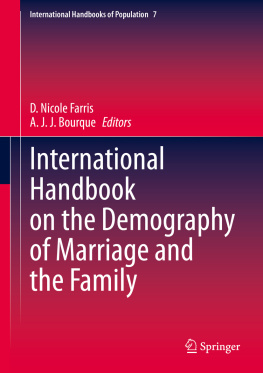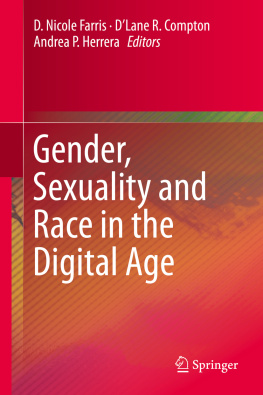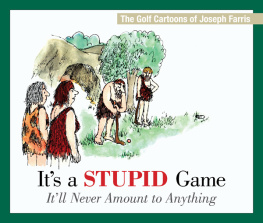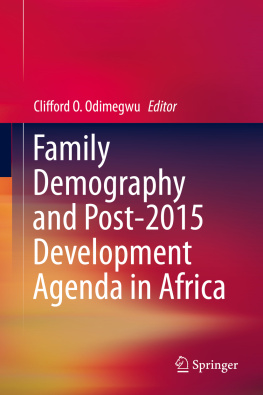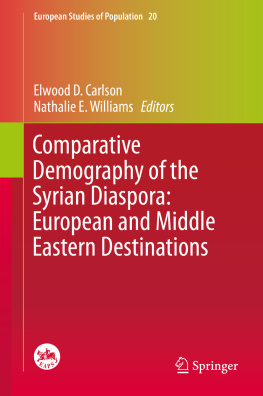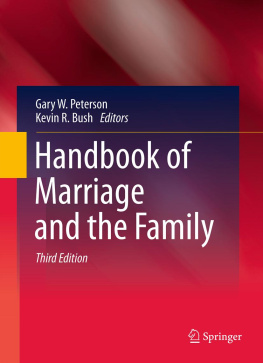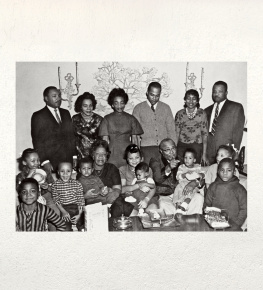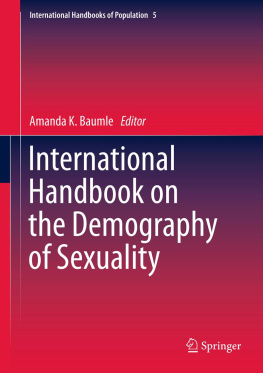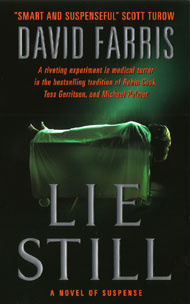D. Nicole Farris - International Handbook on the Demography of Marriage and the Family
Here you can read online D. Nicole Farris - International Handbook on the Demography of Marriage and the Family full text of the book (entire story) in english for free. Download pdf and epub, get meaning, cover and reviews about this ebook. year: 2020, publisher: Springer International Publishing, genre: Home and family. Description of the work, (preface) as well as reviews are available. Best literature library LitArk.com created for fans of good reading and offers a wide selection of genres:
Romance novel
Science fiction
Adventure
Detective
Science
History
Home and family
Prose
Art
Politics
Computer
Non-fiction
Religion
Business
Children
Humor
Choose a favorite category and find really read worthwhile books. Enjoy immersion in the world of imagination, feel the emotions of the characters or learn something new for yourself, make an fascinating discovery.
- Book:International Handbook on the Demography of Marriage and the Family
- Author:
- Publisher:Springer International Publishing
- Genre:
- Year:2020
- Rating:5 / 5
- Favourites:Add to favourites
- Your mark:
- 100
- 1
- 2
- 3
- 4
- 5
International Handbook on the Demography of Marriage and the Family: summary, description and annotation
We offer to read an annotation, description, summary or preface (depends on what the author of the book "International Handbook on the Demography of Marriage and the Family" wrote himself). If you haven't found the necessary information about the book — write in the comments, we will try to find it.
International Handbook on the Demography of Marriage and the Family — read online for free the complete book (whole text) full work
Below is the text of the book, divided by pages. System saving the place of the last page read, allows you to conveniently read the book "International Handbook on the Demography of Marriage and the Family" online for free, without having to search again every time where you left off. Put a bookmark, and you can go to the page where you finished reading at any time.
Font size:
Interval:
Bookmark:
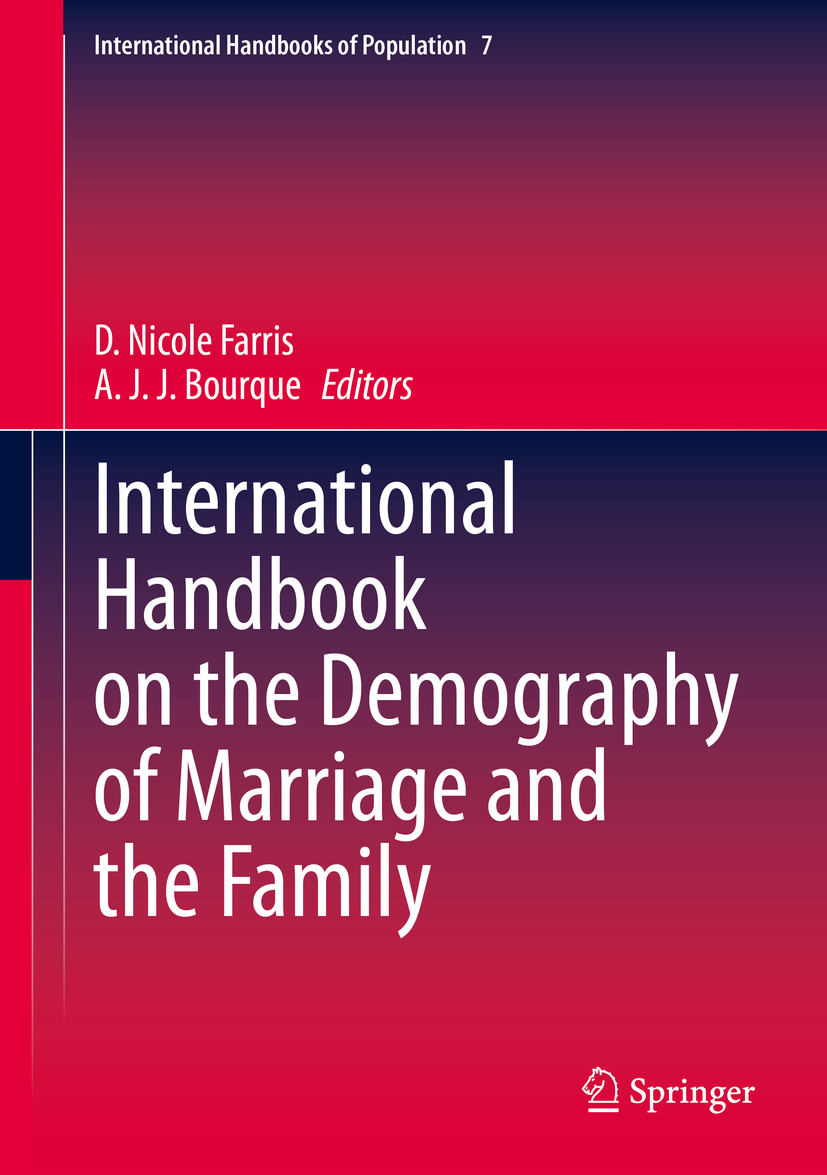
TheInternational Handbooks of Populationoffer up-to-date scholarly summaries and sources of information on the major subject areas and issues of demography and population. Each handbook examines its particular subject area in depth, providing timely, accessible coverage of its full scale and scope, discusses substantive contributions for deeper understanding, and provides reliable guidance on the direction of future developments.
Volumes will explore topics of vital interest such as: Population Ageing, Mortality, Rural Demography, Poverty, Family Demography, Gender and Demography, Applied Demography, Migration, Demography of Sexuality, Race and Ethnic Demography. Each volume will provide a state-of-the-art treatment of its respective area. The series will quickly prove useful to a broad audience including demographers, practitioners and scholars across a range of disciplines.
More information about this series at http://www.springer.com/series/8111

This Springer imprint is published by the registered company Springer Nature Switzerland AG.
The registered company address is: Gewerbestrasse 11, 6330 Cham, Switzerland
One might think that defining a family is an easy task. The family is so significant to society that it is universal. It is one of the most important foundations and agents of socialization and is the first place where we learn culture, norms, values, and gender roles. Families exist in all societies throughout the world; but the constitution of families vastly differs among countries. For example, the Western world has traditionally regarded a family as consisting of a husband, wife, and children.
However, we are seeing increasing numbers of one-parent families, gay and lesbian families, blended families, and childless families. The future family in Western and non-Western societies will not look exactly like families in these societies in the past and the present. Traditional notions of what constitutes a family have long been changing.
Today, many consider the traditional family to consist of a male working outside the home, a woman staying at home taking care of children, and two or more children in the home. This is the kind of idealized family that represented much of America in the 1950s and may be revisited in the reruns of such television programs asThe Adventures of Ozzie and HarrietandLeave It to Beaver. But this family form is not and was not the traditional family.
The contemporary family has changed tremendously in the past seven or so decades. For instance, whereas 65 years ago almost all children in the USA lived in two-parent Ozzie and Harriet-type families, these days only about two-thirds of children live in such families. And this varies tremendously by race and ethnicity, with the percentages lower for black and Latino children.
The family is a topic of special interest to demography. In most times and places, the family is the responsible unit for the production of the next generation. In other words, fertility, i.e., the production of children, usually occurs in the family. Fertility almost always operates within the family setting. But these days, there are many alternative family forms, including gay and lesbian partners, cohabiting heterosexual couples, couples with one or two transgender persons, and so forth. These alternative forms allow us to question whether indeed a family must have culturally recognized ties that are based on biology and/or marriage.
What about the so-called traditional marriage? In the earliest times up to around the seventeenth century, marriages in most societies were not necessarily about love, sex, child-rearing, and affection. Although these may have figured into the marriages, the principal objective of marriage was to gain in-laws who would bring legitimacy. Rulers justified their authority on the basis of ancestry. The best way to bolster ones ancestral legitimacy was to marry someone who also had an august line of ancestors (Coontz 2005: 53). Marriage was also used to establish military and commercial ties. Whereas today rulers and heads of states ratify treaties between countries with their signatures, in the past, they would seal their deals with a marriage ceremony (Coontz 2005: 54). And marriages worked in a similar way with similar benefits for the common people. Children who were married off had virtually no say regarding their new partners; their parents and grandparents and the other male relatives made the decisions.
Farris and BourquesInternational Handbook on the Demography of Marriage and the Familyis the ninth handbook in the series International Handbooks of Population.
International Handbook of Population Aging(Peter Uhlenberg)
International Handbook of Adult Mortality(Richard Rodgers and Eileen Crimmons)
International Handbook of Rural Demography(Laszlo Kulcsar and Katherine Curtis)
International Handbook on the Demography of Sexuality(Amanda Baumle)
International Handbook of the Demography of Race and Ethnicity
Font size:
Interval:
Bookmark:
Similar books «International Handbook on the Demography of Marriage and the Family»
Look at similar books to International Handbook on the Demography of Marriage and the Family. We have selected literature similar in name and meaning in the hope of providing readers with more options to find new, interesting, not yet read works.
Discussion, reviews of the book International Handbook on the Demography of Marriage and the Family and just readers' own opinions. Leave your comments, write what you think about the work, its meaning or the main characters. Specify what exactly you liked and what you didn't like, and why you think so.

